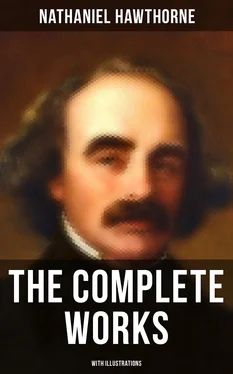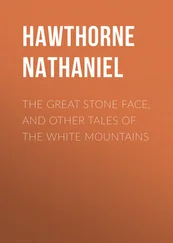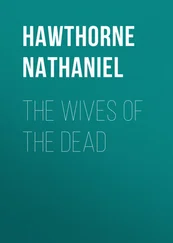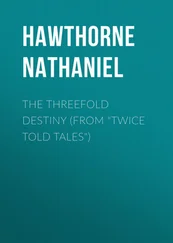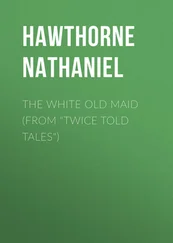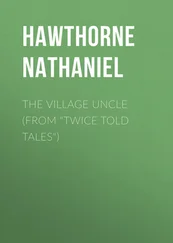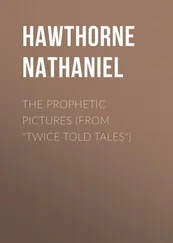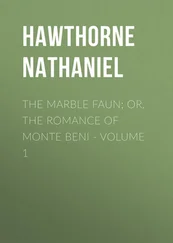In the obscurest part of the room Donatello was half startled at perceiving duskily a woman with long dark hair, who threw up her arms with a wild gesture of tragic despair, and appeared to beckon him into the darkness along with her.
“Do not be afraid, Donatello,” said Miriam, smiling to see him peering doubtfully into the mysterious dusk. “She means you no mischief, nor could perpetrate any if she wished it ever so much. It is a lady of exceedingly pliable disposition; now a heroine of romance, and now a rustic maid; yet all for show; being created, indeed, on purpose to wear rich shawls and other garments in a becoming fashion. This is the true end of her being, although she pretends to assume the most varied duties and perform many parts in life, while really the poor puppet has nothing on earth to do. Upon my word, I am satirical unawares, and seem to be describing nine women out of ten in the person of my lay-figure. For most purposes she has the advantage of the sisterhood. Would I were like her!”
“How it changes her aspect,” exclaimed Donatello, “to know that she is but a jointed figure! When my eyes first fell upon her, I thought her arms moved, as if beckoning me to help her in some direful peril.”
“Are you often troubled with such sinister freaks of fancy?” asked Miriam. “I should not have supposed it.”
“To tell you the truth, dearest signorina,” answered the young Italian, “I am apt to be fearful in old, gloomy houses, and in the dark. I love no dark or dusky corners, except it be in a grotto, or among the thick green leaves of an arbor, or in some nook of the woods, such as I know many in the neighborhood of my home. Even there, if a stray sunbeam steal in, the shadow is all the better for its cheerful glimmer.”
“Yes; you are a Faun, you know,” said the fair artist, laughing at the remembrance of the scene of the day before. “But the world is sadly changed nowadays; grievously changed, poor Donatello, since those happy times when your race used to dwell in the Arcadian woods, playing hide and seek with the nymphs in grottoes and nooks of shrubbery. You have reappeared on earth some centuries too late.”
“I do not understand you now,” answered Donatello, looking perplexed; “only, signorina, I am glad to have my lifetime while you live; and where you are, be it in cities or fields, I would fain be there too.”
“I wonder whether I ought to allow you to speak in this way,” said Miriam, looking thoughtfully at him. “Many young women would think it behooved them to be offended. Hilda would never let you speak so, I dare say. But he is a mere boy,” she added, aside, “a simple boy, putting his boyish heart to the proof on the first woman whom he chances to meet. If yonder lay-figure had had the luck to meet him first, she would have smitten him as deeply as I.”
“Are you angry with me?” asked Donatello dolorously.
“Not in the least,” answered Miriam, frankly giving him her hand. “Pray look over some of these sketches till I have leisure to chat with you a little. I hardly think I am in spirits enough to begin your portrait to-day.”
Donatello was as gentle and docile as a pet spaniel; as playful, too, in his general disposition, or saddening with his mistress’s variable mood like that or any other kindly animal which has the faculty of bestowing its sympathies more completely than men or women can ever do. Accordingly, as Miriam bade him, he tried to turn his attention to a great pile and confusion of pen and ink sketches and pencil drawings which lay tossed together on a table. As it chanced, however, they gave the poor youth little delight.
The first that he took up was a very impressive sketch, in which the artist had jotted down her rough ideas for a picture of Jael driving the nail through the temples of Sisera. It was dashed off with remarkable power, and showed a touch or two that were actually lifelike and deathlike, as if Miriam had been standing by when Jael gave the first stroke of her murderous hammer, or as if she herself were Jael, and felt irresistibly impelled to make her bloody confession in this guise.
Her first conception of the stern Jewess had evidently been that of perfect womanhood, a lovely form, and a high, heroic face of lofty beauty; but, dissatisfied either with her own work or the terrible story itself, Miriam had added a certain wayward quirk of her pencil, which at once converted the heroine into a vulgar murderess. It was evident that a Jael like this would be sure to search Sisera’s pockets as soon as the breath was out of his body.
In another sketch she had attempted the story of Judith, which we see represented by the old masters so often, and in such various styles. Here, too, beginning with a passionate and fiery conception of the subject in all earnestness, she had given the last touches in utter scorn, as it were, of the feelings which at first took such powerful possession of her hand. The head of Holofernes (which, by the bye, had a pair of twisted mustaches, like those of a certain potentate of the day) being fairly cut off, was screwing its eyes upward and twirling its features into a diabolical grin of triumphant malice, which it flung right in Judith’s face. On her part, she had the startled aspect that might be conceived of a cook if a calf’s head should sneer at her when about to be popped into the dinner-pot.
Over and over again, there was the idea of woman, acting the part of a revengeful mischief towards man. It was, indeed, very singular to see how the artist’s imagination seemed to run on these stories of bloodshed, in which woman’s hand was crimsoned by the stain; and how, too, — in one form or another, grotesque or sternly sad, — she failed not to bring out the moral, that woman must strike through her own heart to reach a human life, whatever were the motive that impelled her.
One of the sketches represented the daughter of Herodias receiving the head of John the Baptist in a charger. The general conception appeared to be taken from Bernardo Luini’s picture, in the Uffizzi Gallery at Florence; but Miriam had imparted to the saint’s face a look of gentle and heavenly reproach, with sad and blessed eyes fixed upward at the maiden; by the force of which miraculous glance, her whole womanhood was at once awakened to love and endless remorse.
These sketches had a most disagreeable effect on Donatello’s peculiar temperament. He gave a shudder; his face assumed a look of trouble, fear, and disgust; he snatched up one sketch after another, as if about to tear it in pieces. Finally, shoving away the pile of drawings, he shrank back from the table and clasped his hands over his eyes.
“What is the matter, Donatello?” asked Miriam, looking up from a letter which she was now writing. “Ah! I did not mean you to see those drawings. They are ugly phantoms that stole out of my mind; not things that I created, but things that haunt me. See! here are some trifles that perhaps will please you better.”
She gave him a portfolio, the sketches in which indicated a happier mood of mind, and one, it is to be hoped, more truly characteristic of the artist. Supposing neither of these classes of subject to show anything of her own individuality, Miriam had evidently a great scope of fancy, and a singular faculty of putting what looked like heart into her productions. The latter sketches were domestic and common scenes, so finely and subtilely idealized that they seemed such as we may see at any moment, and eye, where; while still there was the indefinable something added, or taken away, which makes all the difference between sordid life and an earthly paradise. The feeling and sympathy in all of them were deep and true. There was the scene, that comes once in every life, of the lover winning the soft and pure avowal of bashful affection from the maiden whose slender form half leans towards his arm, half shrinks from it, we know not which. There was wedded affection in its successive stages, represented in a series of delicately conceived designs, touched with a holy fire, that burned from youth to age in those two hearts, and gave one identical beauty to the faces throughout all the changes of feature.
Читать дальше
